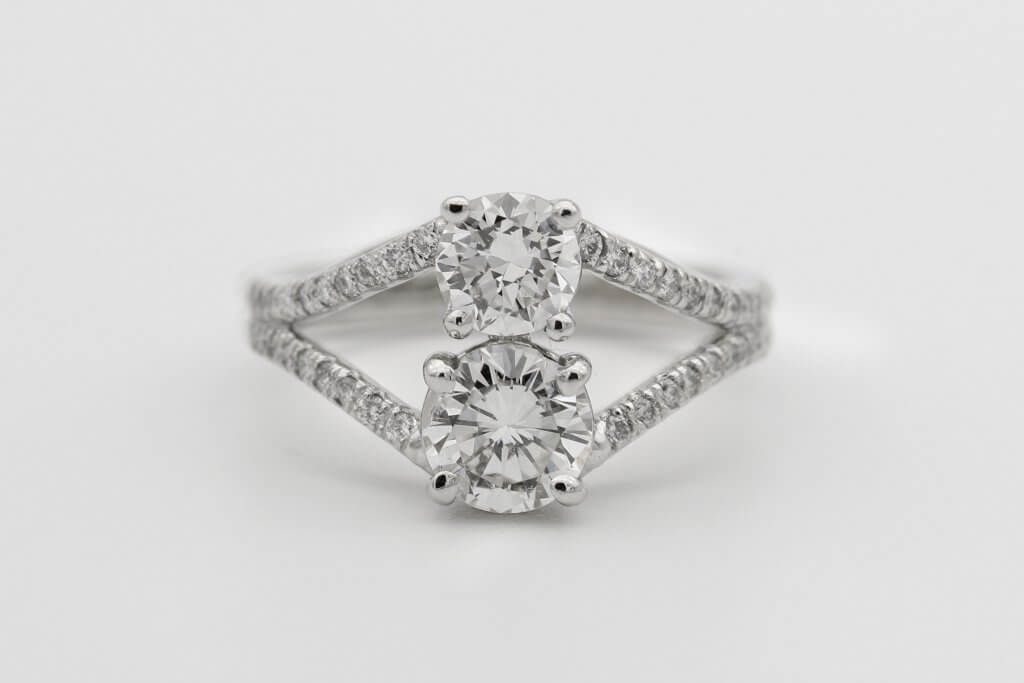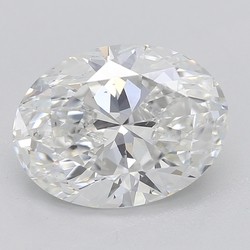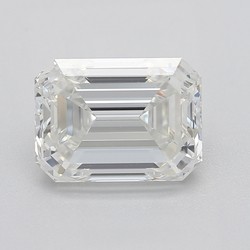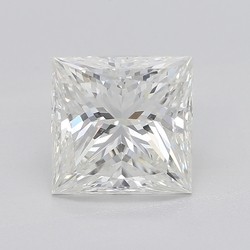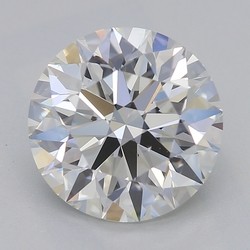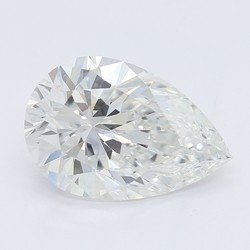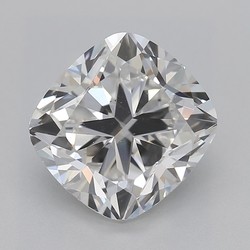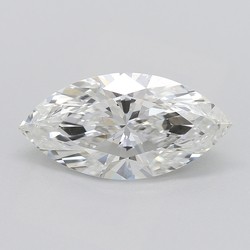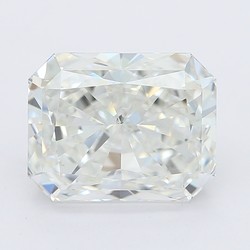The Surprising Facts About Diamond Feathers
Key Takeaways
- It can come as quite a surprise just how many inclusions can be found in a diamond.
- Many of them, as stated, will not be seen unless looked at through a magnifying glass.
- This includes diamond feather inclusions, which represent one of the most common flaws in a diamond.
- Most of the time, these inclusions are fine and unnoticeable, but significant feathers can impact the beauty and strength of a stone.
- You should not take feathers as a negative. Most diamonds will feature these inclusions in some form, but the most important thing is whether the diamond is pleasing to your eye and good for your budget.
- Also, avoid any diamond with a feather (visible or not) too close to the surface.
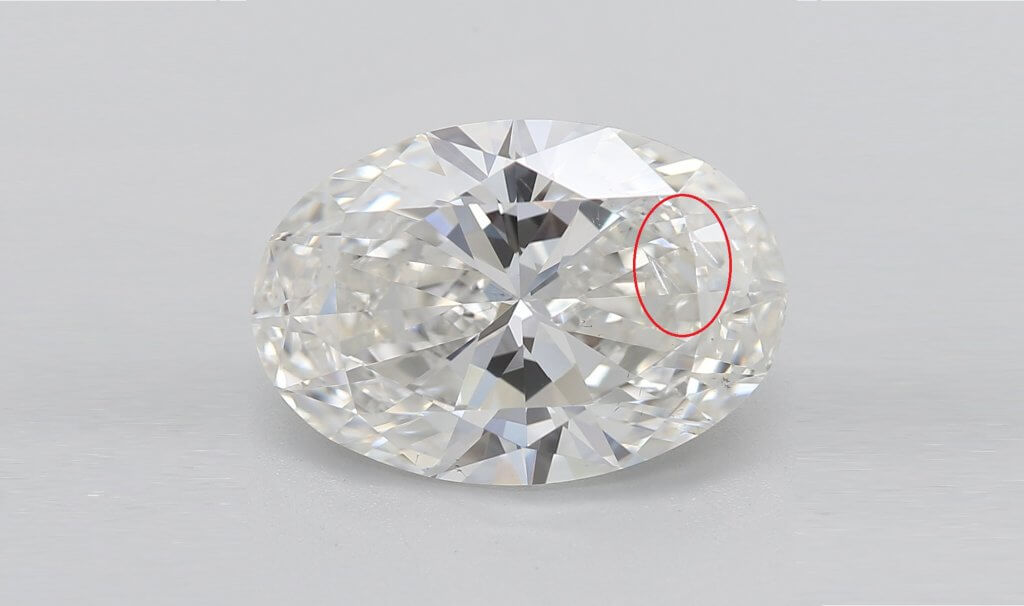
When we talk about diamond clarity, and the presence or absence of visible inclusions, it’s convenient to lump them all together under that one umbrella term. After all, when we’re aiming for eye cleanliness, it doesn’t matter what inclusions a diamond has, provided they remain invisible to the naked eye, right?
For this reason alone, it can be pretty surprising for people when they first lean about quite how many different types of inclusions a diamond can have. From minute crystals of other substances to fissures within the diamond’s structure, like the feather itself, it’s pretty handy to know the basics of some of the most common types of inclusion – namely, what they are, and how they can impact the look and strength of a diamond.
What is a Feather in a Diamond?
A feather is a common type of inclusion that occurs naturally within diamonds during their development. It is a fracture (internal break) characterized by frayed, ‘feathery’ edges, which give it its name.
Like many other types of inclusions, feathers can be incredibly small – too small, even, to see without 10x magnification. They can also be white in appearance, and this helps them to be very easily concealed within the diamond – particularly if they occur towards the edge (without actually reaching it), rather than the table at the stone’s center.
Unfortunately, however, there are times when a feather is large enough to be seen – or even to overwhelm the entire diamond, and threaten its durability.
In some cases, the feather can appear as a much darker line running through the diamond – and, when this happens, light performance (sparkle) can be negatively impacted.
Are Feathers in Diamonds Common?
Yes and, most of the time, you won’t even notice they are there.
Alongside clouds, crystals and pinpoint inclusions, feathers are some of the most common flaws out there.
Once you start looking more closely at diamonds currently on the market, you will start to notice how common feather inclusions really are. In any GIA report, a diamond’s inclusions are meticulously plotted within a diagram. Feathers will be demarcated by a short, wavy line – even if the diamond is eye clean.
Is a Feather in a Diamond Bad?
Most of the time a feather is totally fine, although significant feathers can impact not only the beauty of the stone – but also its strength.
Most feathers mean very little for a diamond, and aside from lowering their clarity grade – and, as a result, their market value – whether or not it has a feather will be pretty much irrelevant to the diamond’s future wearer.
In some instances, however, a feather inclusion can undermine the structural integrity of the stone. If it’s positioned close to the surface, then the diamond can be more vulnerable to breaking – particularly if it’s worn on a prominent place, such as the finger. In extreme cases, the term ‘feather’ can be a little misleading, as it suggests something less worrying than a crack within the diamond.
You should be particularly wary if the diamond features a large feather very close to the diamond’s girdle, as a hard knock could very easily cause a fractur in this precarious position to grow larger. Even a small feather, if it reaches the very edge of the diamond, should be avoided.
These diamonds will be given a very low clarity grade, however, and provided you stick to eye clean diamonds, you won’t be at risk of looking down to find your diamond chipped or broken.
Do Feathers Affect Sparkle?
It’s certainly possible, but only if they’re significant enough to impact the diamond’s appearance.
We’re not talking about what the diamond looks like under magnification, but, instead, what it looks like outside of the grading lab. This is the most important test of all, since it’s the only way you’re going to be able to decide whether or not the diamond is eye clean.
Diamonds of this quality don’t miss out on sparkle because of a few minute inclusions, only visible to a skilled grader under 10x magnification.
If a diamond is low on brilliance or fire, then the chances are that it’s suffering from a poor cut – for instance, a low table percentage or a high depth percentage – rather than a few minor feathers, pinpoints, or clouds.
Yes, inclusions can impact sparkle, but if you’re reserving your interest for eye clean diamonds only, a few minor feathers won’t prevent it from producing an abundance of brilliance and fire.
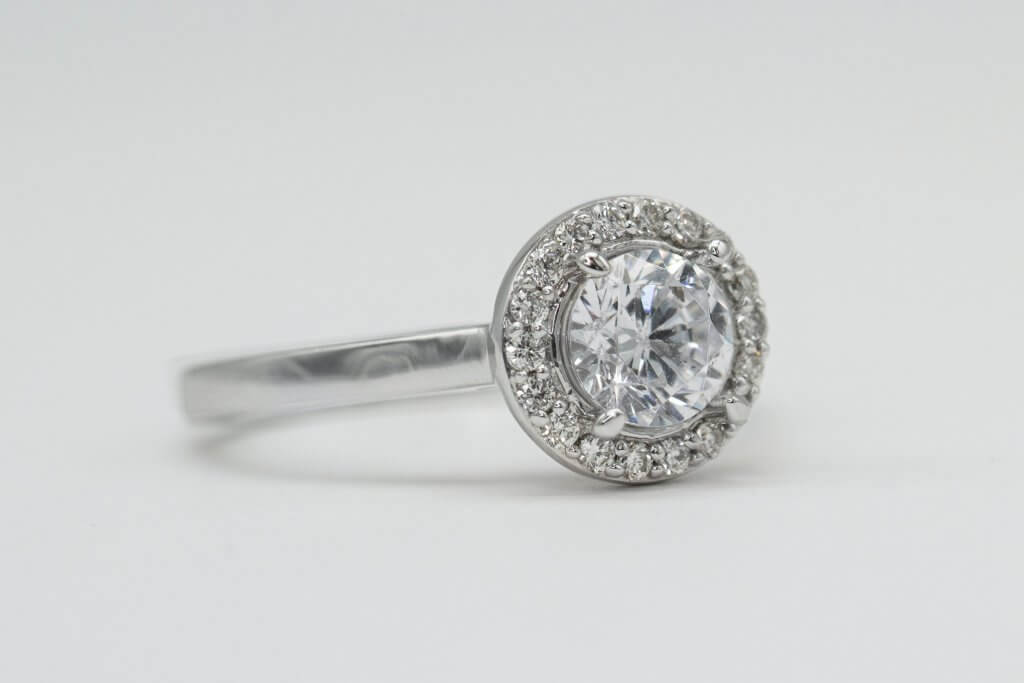
Should You Worry About Diamond Feathers?
In general, no, particularly if you have talked it through with your jeweler.
Ask them to go through the precise location of your diamond’s feathers, since the diamond plot included within your GIA report is not detailed enough to pinpoint how close to (or far from) the diamond’s edge the feathers are.
Anyway, in most cases, an eye clean diamond will offer plenty of reassurance over the value of your diamond – and its durability. Besides, a reputable jeweler wouldn’t attempt to sell you a diamond that was at risk of cracking further during routine wear and tear so, provided you choose to work with a reputable local jewelry store, you don’t need to worry yourself over some minor feathers in your diamond.
So, Should You Pick a Diamond with Feathers?
Absolutely, provided it’s eye clean, features an Excellent or Very Good cut grade, and visually colorless.
Many, many diamonds on the market today feature feathers. They are, however, much more common sights in GIA reports than they are in the diamonds themselves, since very few of us choose to appreciate diamonds on a microscopic level – and for good reason.
Inclusions are totally irrelevant to the beauty of your engagement ring, and no one you show it to is going to ask to check the GIA report for how many microscopic inclusions it features. As a result, the decision to save up and invest into an internally flawless diamond is far worse than the decision to focus your search on the wide and varied world of eye clean diamonds.
So, yes – if the diamond you’re falling for features feather inclusions only visible within the GIA report, don’t take it as a negative. Take it as a sign you’re making a strong investment, and creating a beautiful engagement ring for your future bride.
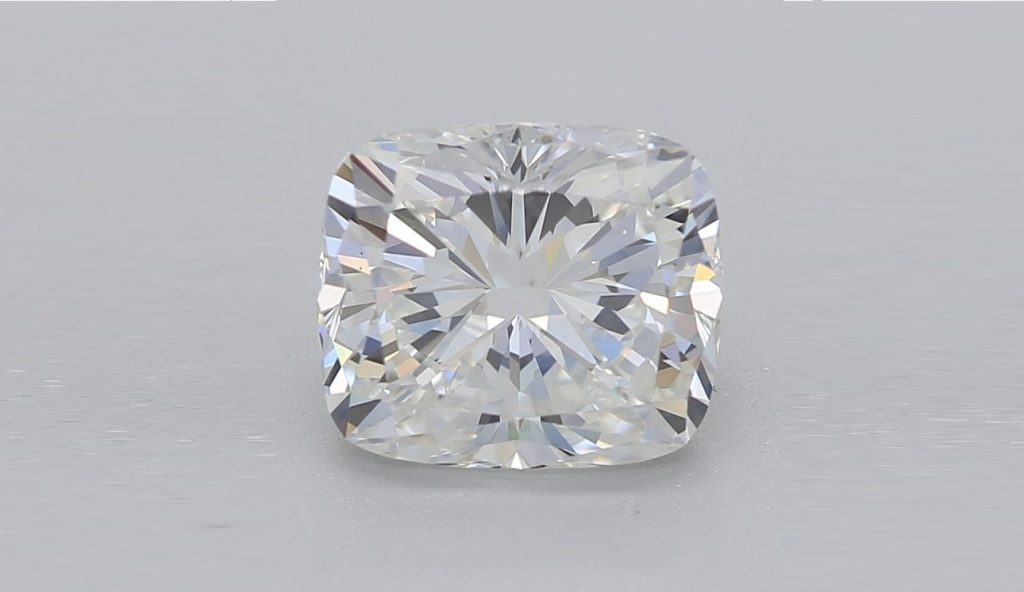
Jul 27, 2022 By Willyou.net
Are VS1 Diamonds Right For You?
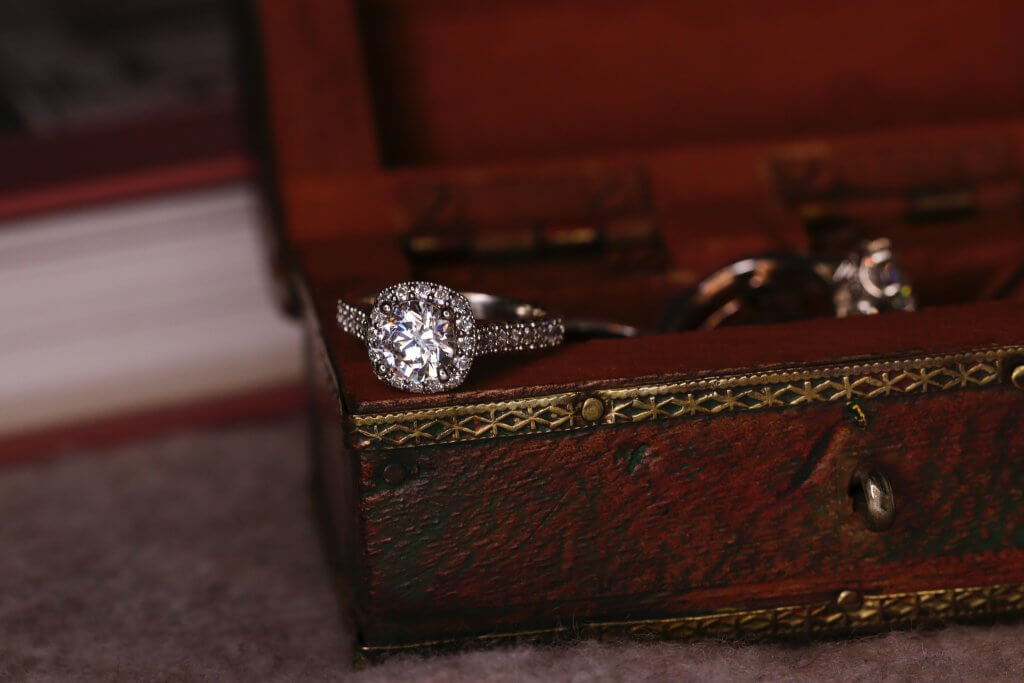
Jul 18, 2022 By Willyou.net
The Unexpected Side Of VVS Diamond Clarity Grade
